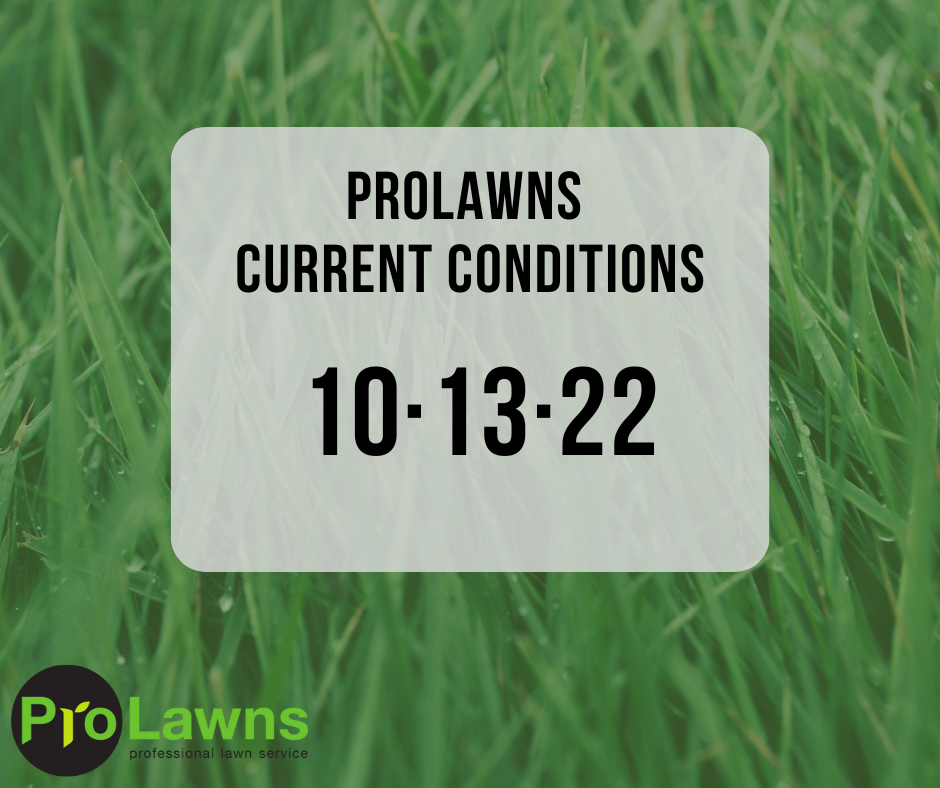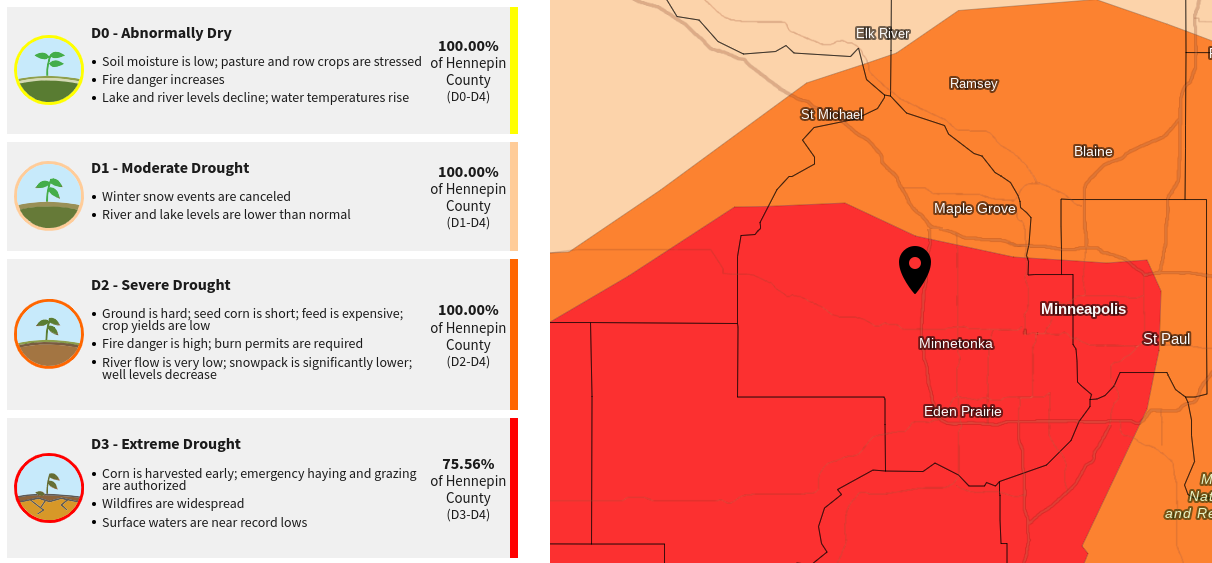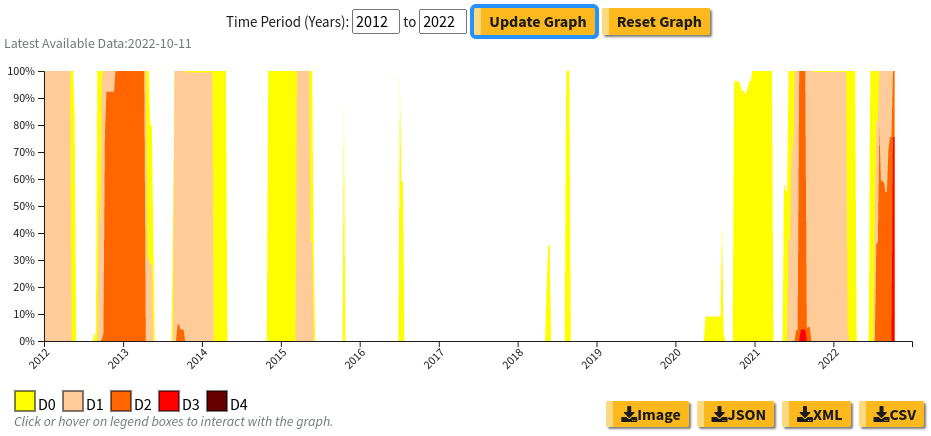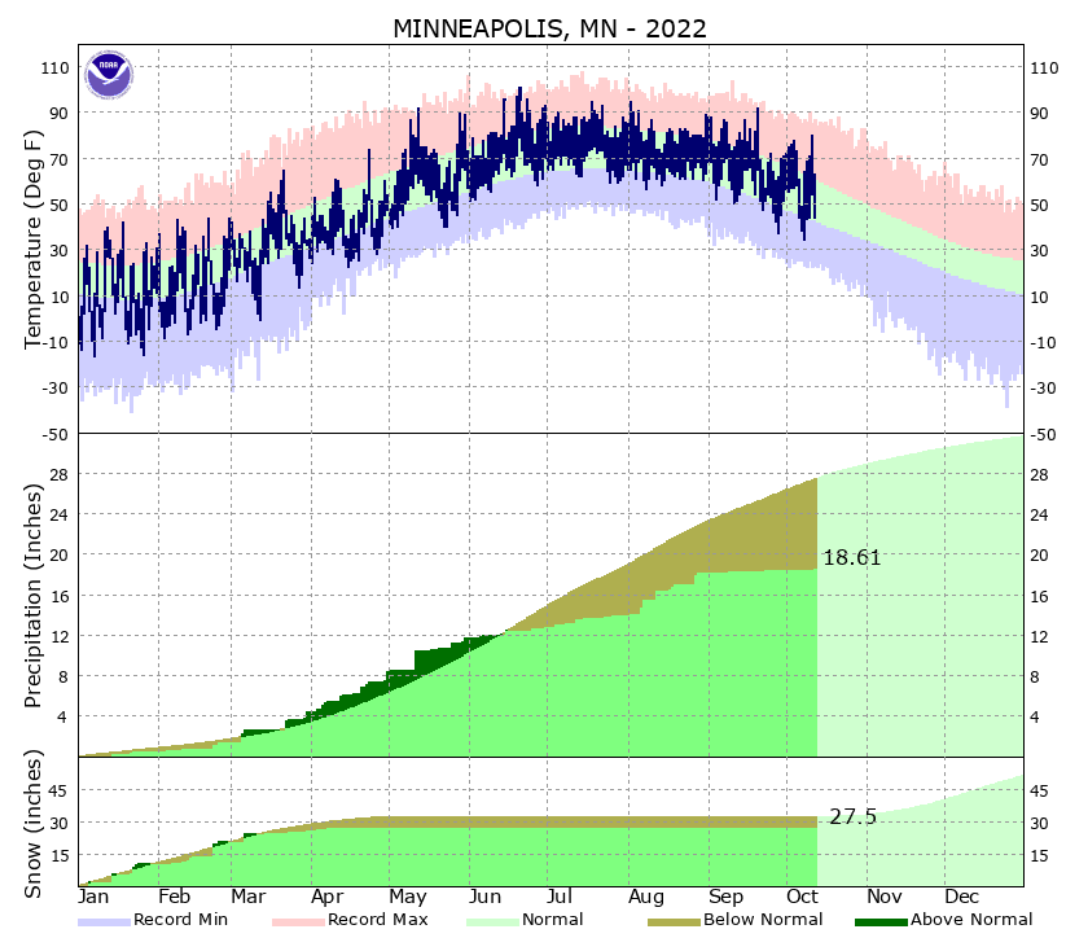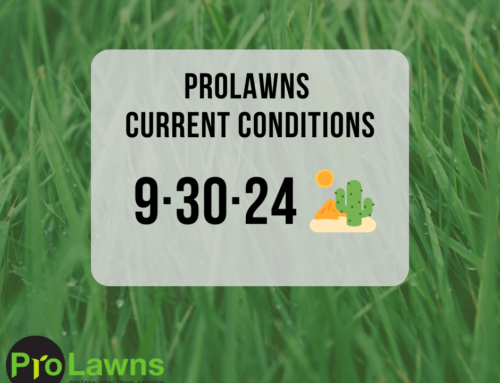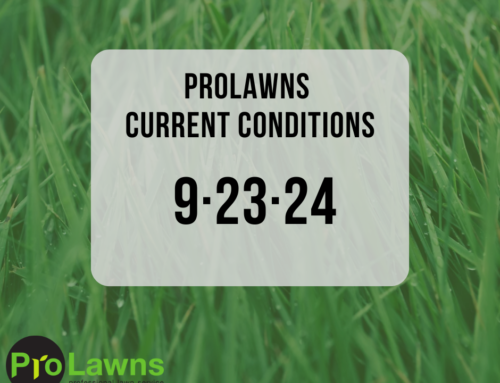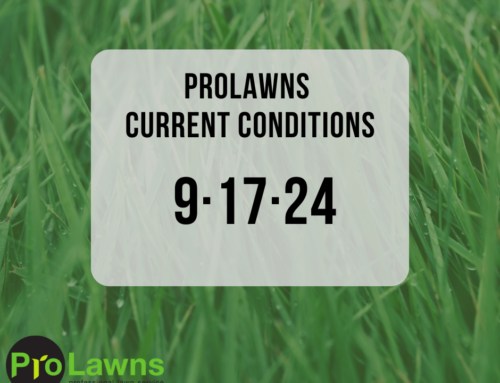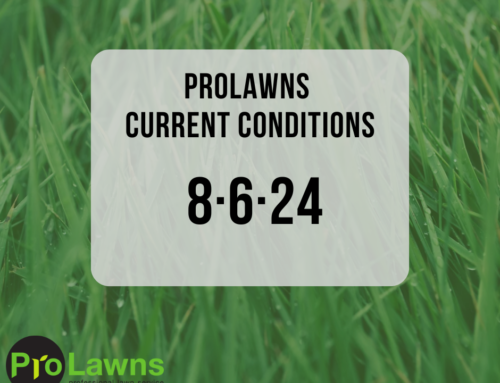What we’re noticing:
- Dry conditions. The drought status of Hennepin County reached “Extreme” prior to yesterday’s rain. That rain was good; mare than we got in all of September but nowhere near enough to make up for the deficit we’re at. Source: Drought.gov
- How does our drought stack up against the last 10 years? We’ve had longer droughts and worse ones but what worth noticing in the chart below is that most of the droughts have occurred over the winter months. Last year as well as this year, we’ve hit hard droughts during our growing season which we haven’t really seen since 2014. Source: Drought.gov
- Our growing season in review (Also tooting ProLawns’ Horn). Refer to chart below. Source: Weather.gov
- You can see that our May started off great. It was hot but we had over-average rain too.
- In early June we started to go into our rain deficit. We did not know it would continue but that’s when we started to communicate and educate our clients and we’re sure glad we did. June 10th “DO NOT MOW YOUR LAWN SHORT THIS WEEKEND IF AT ALL“
- We got to August conditions continuing to worsen and us sending regular communication about mowing and watering. We then started to get regular rain and temperatures. You can see the big jump in rain amounts through August which gave us the confidence to say: Aug 30th “smooth sailing the rest of the year“
- Mother Nature thought she’d teach us a lesson for that overconfidence. We then went into the driest September ever recorded and nearly halfway through October without rain. As of this writing we’re ~10 inches below normal on rainfall. We should be at 28″. We’ll need some good Fall rain and, I hate to say it, a lot of snow over the winter to make up for the deficit.
- This deficit will be very hard on trees and the stress will show up next year.
What we’re doing:
- We’re done on the lawns! Thanks for a great season! This will likely be the last current condition update this season
- We spend our winters with a skeleton crew working as follows:
- Solve problems and fix what’s not working
- Refine systems and procedures to improve thing that are working but could be better
- Develop and nurture new ideas that can improve our client’s results/experience, our team’s experience, our efficiency.
What you can be doing:
- Water – at this point, it’s not so much for the lawn (keep watering your lawn if possible too!) but more so for your trees. We know many people have had their sprinkler systems winterized already. If you can water with the hose and regular sprinkler under your trees and any parts of your lawn, please do. It could save your trees. You cannot water too much right now.
- Watch for freezes; shutting off from inside and letting your faucets drain prior.
- There will be freezes this weekend but then by the end of next week the highs will be in the 60s again and your grass and trees would really appreciate watering.
- Mow shorter through the end of the month. Shorter grass going into the winter will reduce snow mold.
- Mow lower each week incrementally (don’t set your mower way down all at once).
- Stop lowering at the first sign of scalping the turf (mower blades cutting into dirt in any spot). Go one notch higher than that (Tip: mark your mower so you know how low to go next fall).
- Mulch vs Remove leaves??
- Yes
- The internet says that mulching your leaves into your lawn will add nutrients to the soil for next spring. While this is true, the amount is insignificant and you won’t notice any difference in green.
- There is no problem with mulching leaves as long as it’s done right. It takes running over the leave many many times to mulch them small enough to not cause issues. Some areas of the lawn may need the leaves blown to less-leaf-dense areas and mulched there. Correctly mulched leaves should not be visible; There should be nothing left on top of the grass.
- There may be lawns with so much mature tree cover that the amount of leaves on the lawn cannot possibly be mulched enough. The leaves may need to be raked/bagged. I still recommend mulching them first to reduce the amount that needs to be removed.
- There’s no issues with removing/bagging leaves. Like mentioned above, you aren’t removing any noticeable amount of nutrient. This is more time consuming if you have to bring them someplace but probably quicker than mulching correctly if you can dump them on your property.
- Matt (ProLawns Owner) mulches his leaves for two reasons not having to do with the lawn:
- He doesn’t have a bagger for his mower
- He would have to bring the leaves to the dump

